Crystallographic Origin of Phase Transformation and Lamellar Orientation Control for TiAl-Based Alloys
Abstract
:1. Introduction
2. Materials and Methods
3. Results and Discussion
3.1. Anisotropy of β/α Interfacial Energy
3.2. Thermodynamics and Kinetics
- the creation of a volume V of α, which causes a volume free energy reduction of VΔGv;
- the creation of an area A of β/α interface, which gives a free energy increase of Aγ;
- the creation of a volume V of α, which gives rise to a misfit strain energy of VΔGs.
3.3. Crystallography
3.4. EBSD Characterization of Different Oriented Lamellar Structures
4. Conclusions
Author Contributions
Funding
Institutional Review Board Statement
Informed Consent Statement
Data Availability Statement
Conflicts of Interest
References
- Pollock, T.M. Alloy design for aircraft engines. Nat. Mater. 2016, 15, 809–815. [Google Scholar] [CrossRef] [PubMed]
- Plummer, J. Understanding a way to fly high. Nat. Mater. 2016, 15, 819–820. [Google Scholar] [CrossRef] [PubMed]
- Schütze, M. High-temperature alloys: Single-crystal performance boost. Nat. Mater. 2016, 15, 823–824. [Google Scholar] [CrossRef] [PubMed]
- Chen, G.; Peng, Y.B.; Zheng, G.; Qi, Z.X.; Wang, M.Z.; Yu, H.C.; Dong, C.L.; Liu, C.T. Polysynthetic Twinned TiAl Single Crystals for High Temperature Applications. Nat. Mater. 2016, 15, 876–881. [Google Scholar] [CrossRef] [PubMed]
- Kim, Y.W. Ordered intermetallic alloys, part III: Gamma titanium aluminides. JOM 1994, 46, 30–39. [Google Scholar] [CrossRef]
- Clemens, H.; Kestler, H. Processing and Applications of Intermetallic γ-TiAl-Based Alloys. Adv. Eng. Mater. 2000, 2, 551–570. [Google Scholar] [CrossRef]
- Lasalmonie, A. Intermetallics: Why is it so difficult to introduce them in gas turbine engines? Intermetallics 2006, 14, 1123–1129. [Google Scholar] [CrossRef]
- Liu, C.T.; Schneibel, J.H.; Maziasz, P.J.; Wright, J.L.; Easton, D.S. Tensile properties and fracture toughness of TiAl alloys with controlled microstructures. Intermetallics 1996, 4, 429–440. [Google Scholar] [CrossRef]
- Bewlay, B.P.; Weimer, M.; Kelly, T.; Suzuki, A.; Subramanian, P.R. The Science, Technology, and Implementation of TiAl Alloys in Commercial Aircraft Engines. MRS Proc. 2013, 1516, 49–58. [Google Scholar] [CrossRef]
- Janschek, P. Wrought TiAl Blades. Mater. Today Proc. 2015, 2, S92–S97. [Google Scholar] [CrossRef]
- Johnson, D.R.; Inui, H.; Yamaguchi, M. Directional solidification and microstructural control of the TiAl/Ti3Al lamellar microstructure in TiAl-Si alloys. Acta Mater. 1996, 44, 2523–2535. [Google Scholar] [CrossRef]
- Takeyama, M.; Yamamoto, Y.; Morishima, H.; Koike, K.; Chang, S.Y.; Matsuo, T. Lamellar orientation control of Ti-48Al PST crystal by unidirectional solidification. Mater. Sci. Eng. A 2002, 329–331, 7–12. [Google Scholar] [CrossRef]
- Johnson, D.R.; Masuda, Y.; Inui, H.; Yamaguchi, M. Alignment of the TiAl/Ti3Al lamellar microstructure in TiAl alloys by growth from a seed material. Acta Mater. 1997, 45, 2523–2533. [Google Scholar] [CrossRef]
- Yokoshima, S.; Yamaguchi, M. Fracture behavior and toughness of PST crystals of TiAl. Acta Mater. 1996, 44, 873–883. [Google Scholar] [CrossRef]
- Yamaguchi, M.; Johnson, D.R.; Lee, H.N.; Inui, H. Directional solidification of TiAl-base alloys. Intermetallics 2000, 8, 511–517. [Google Scholar] [CrossRef]
- Burgers, W.G. On the process of transition of the cubic-body-centered modification into the hexagonal-close-packed modification of zirconium. Physica 1934, 1, 561–586. [Google Scholar] [CrossRef]
- Blackburn, M.J. The Science, Technology, and Application of Titanium; Jaffee, R.I., Promisel, N.E., Eds.; Pergamon Press: Oxford, UK, 1970; p. 663. [Google Scholar]
- Kim, M.C.; Oh, M.H.; Lee, J.H.; Inui, H.; Yamaguchi, M.; Wee, D.M. Composition and growth rate effects in directionally solidified TiAl alloys. Mater. Sci. Eng. A. 1997, 239, 570–576. [Google Scholar] [CrossRef]
- Jung, I.S.; Jang, H.S.; Oh, M.H.; Lee, J.H.; Wee, D.M. Microstructure control of TiAl alloys containing β stabilizers by directional solidification. Mater. Sci. Eng. A. 2002, 329, 13–18. [Google Scholar] [CrossRef]
- Gu, X.F.; Zhang, W.Z.; Qiu, D. A systematic investigation of the development of the orientation relationship in an fcc/bcc system. Acta Mater. 2011, 59, 4944–4956. [Google Scholar] [CrossRef]
- Gu, X.F.; Furuhara, T.; Zhang, W.Z. PTC Lab: Free and open-source software for calculating phase transformation crystallography. J. Appl. Crystallogr. 2016, 49, 1099–1106. [Google Scholar] [CrossRef]
- Edwards, T.E.J.; Di Gioacchino, F.; Mohanty, G.; Wehrs, J.; Michler, J.; Clegg, W.J. Longitudinal twinning in a TiAl alloy at high temperature by in situ microcompression. Acta Mater. 2018, 148, 202–215. [Google Scholar] [CrossRef]
- Grytsiv, A.; Rogl, P.; Schmidt, H.; Giester, G. Constitution of the ternary system Al-Ru-Ti (Aluminum-Ruthenium-Titanium). J. Phase Equilib. 2003, 24, 511–527. [Google Scholar] [CrossRef]
- Schuster, J.C.; Palm, M. Reassessment of the binary aluminum-titanium phase diagram. J. Phase Equilib. Diff. 2006, 27, 255–277. [Google Scholar] [CrossRef]
- Ye, F.; Zhang, W.Z.; Qiu, D. A TEM study of the habit plane structure of intragrainular proeutectoid α precipitates in a Ti–7.26 wt% Cr alloy. Acta Mater. 2004, 52, 2449–2460. [Google Scholar] [CrossRef]
- Porter, D.A.; Easterling, K.E.; Sherif, M.Y. Phase Transformations in Metals and Alloys; CRC Press: Boca Raton, FL, USA, 2009. [Google Scholar]
- Elliott, A.J.; Pollock, T.M.; Tin, S.; King, W.T.; Huang, S.C.; Gigliotti, M.F.X. Directional solidification of large superalloy castings with radiation and liquid-metal cooling: A comparative assessment. Metall. Mater. Trans. A 2004, 35, 3221–3231. [Google Scholar] [CrossRef]
- Dahmen, U. Orientation relationships in precipitation systems. Acta Metall. 1982, 30, 63–73. [Google Scholar] [CrossRef] [Green Version]
- Hao, Y.L.; Xu, D.S.; Cui, Y.Y.; Yang, R.; Li, D. The site occupancies of alloying elements in TiAl and Ti3Al alloys. Acta Mater. 1999, 47, 1129–1139. [Google Scholar] [CrossRef]
- Yan, S.; Qi, Z.X.; Chen, Y.; Cao, Y.D.; Zhang, J.P.; Zheng, G.; Chen, F.R.; Bian, T.; Chen, G. Interlamellar boundaries govern cracking. Acta Mater. 2021, 215, 117091. [Google Scholar] [CrossRef]
- Hou, R.; Zheng, G.; Chen, G. Microstructure stability of PST TiAl single crystal subjected to long-term thermal exposure. Acta Mater. 2022; submitted. [Google Scholar]
- Chen, G.; Zheng, G.; Qi, Z.X.; Zhang, J.P.; Li, P.; Cheng, J.L.; Zhang, Z.W. Research progress on controlled solidification and its applications. Acta Metall. Sin. 2018, 54, 669–681. [Google Scholar]
- Chen, Y.; Cao, Y.D.; Qi, Z.X.; Chen, G. Increasing high-temperature fatigue resistance of polysynthetic twinned TiAl single crystal by plastic strain delocalization. J. Mater. Sci. Technol. 2021, 93, 53–59. [Google Scholar] [CrossRef]
- Wang, D.P.; Qi, Z.X.; Zhang, H.T.; Chen, G.; Lu, Y.; Sun, B.A.; Liu, C.T. Microscale mechanical properties of ultra-high-strength polysynthetic TiAl-Ti3Al single crystals. Mater. Sci. Eng. A 2018, 732, 14–20. [Google Scholar] [CrossRef]
- He, N.; Qi, Z.X.; Cheng, Y.X.; Zhang, J.P.; He, L.L.; Chen, G. Atomic-scale investigation on the interface structure of {2201} α2-Ti3Al deformation twins in polysynthetically twinned TiAl single crystals. Intermetallics 2021, 128, 106995. [Google Scholar]
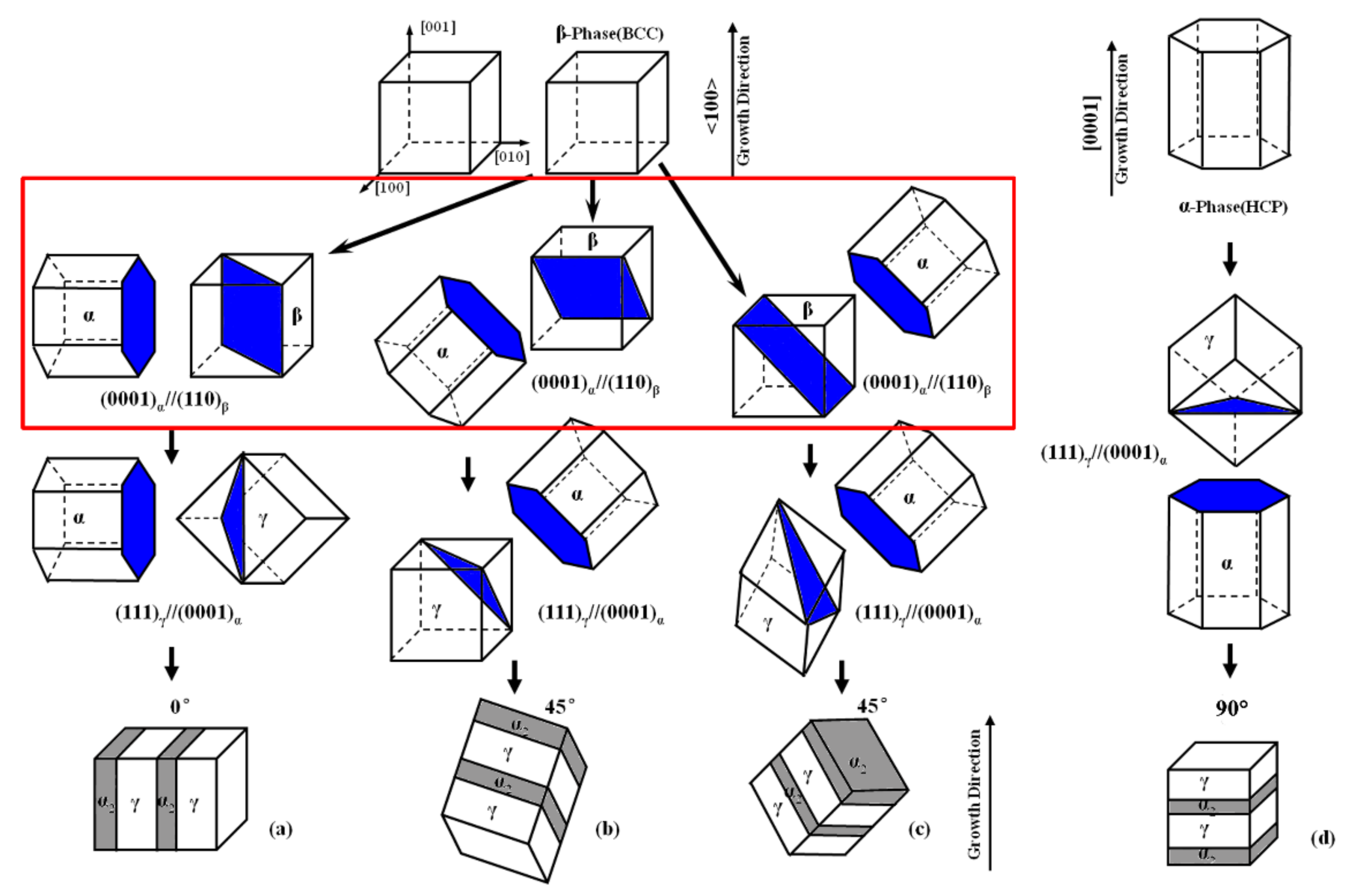
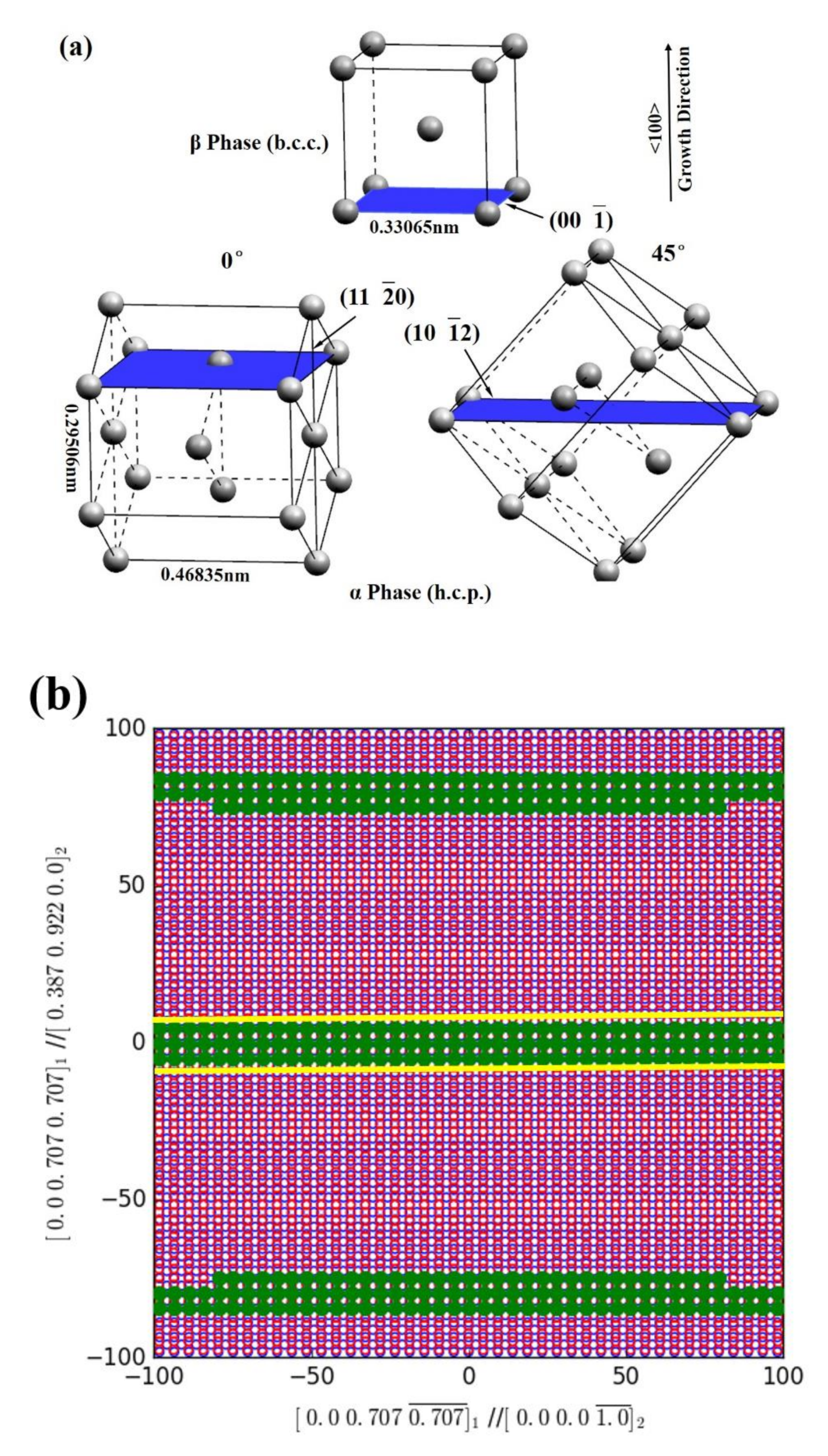
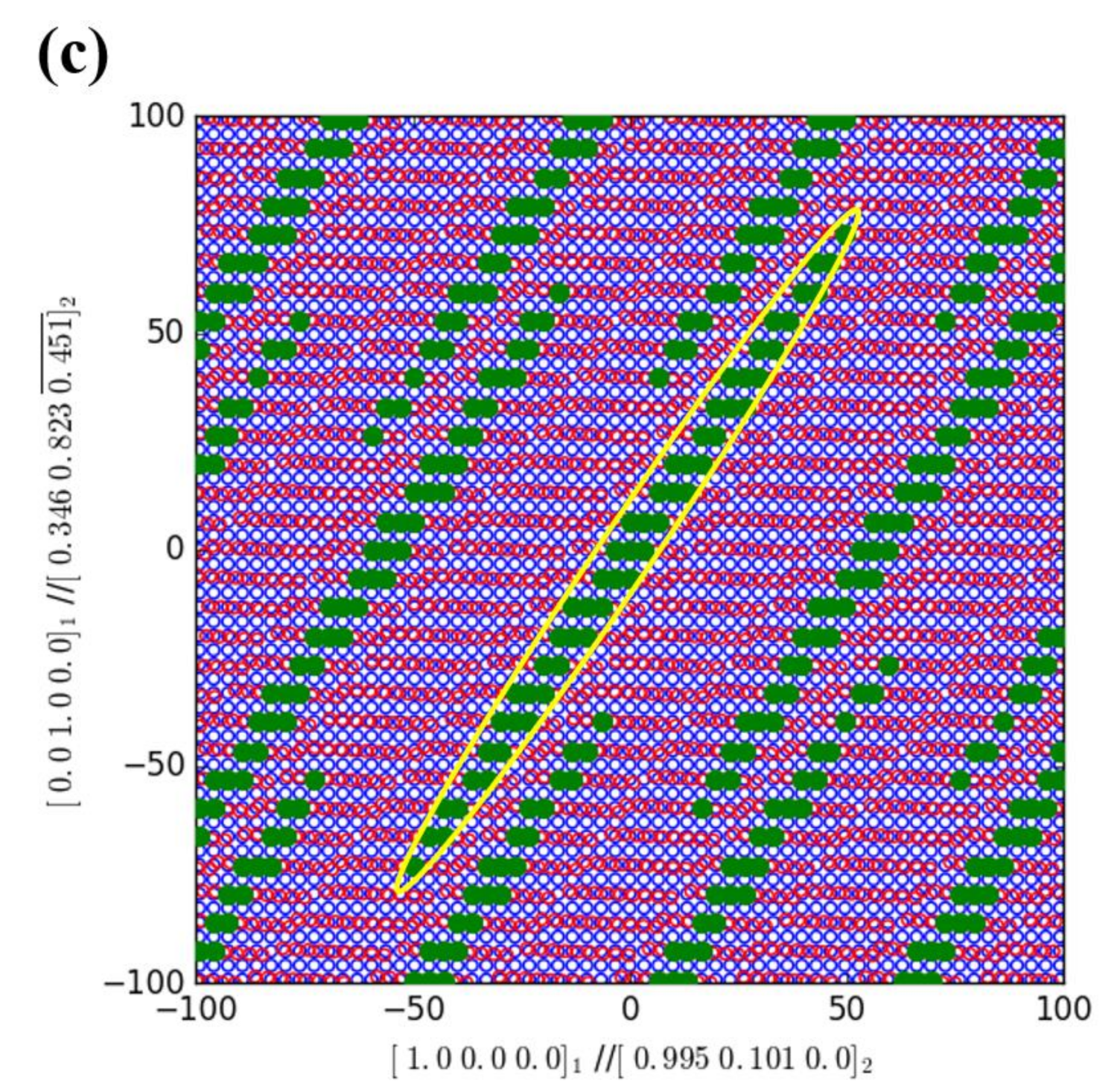
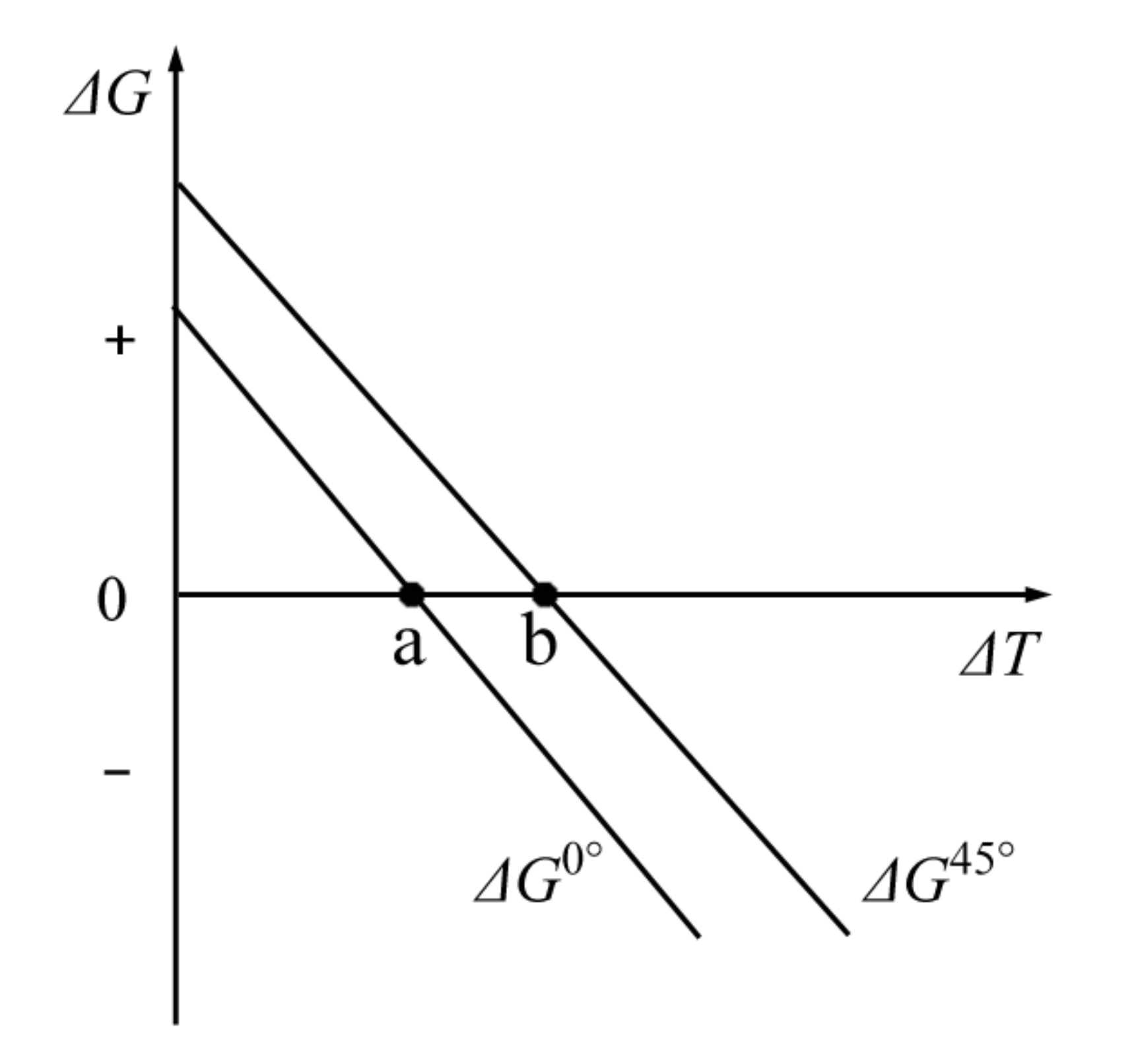
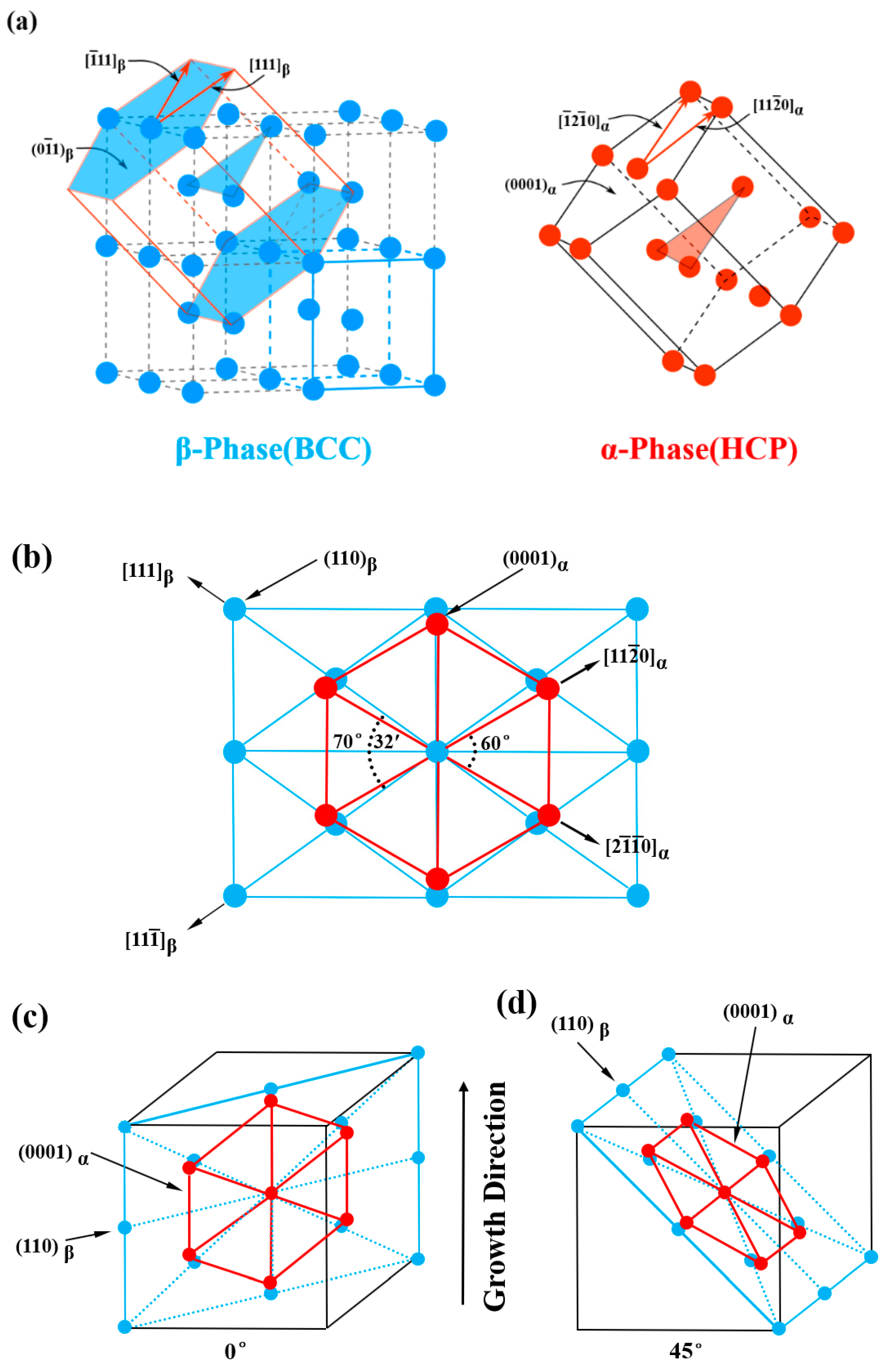
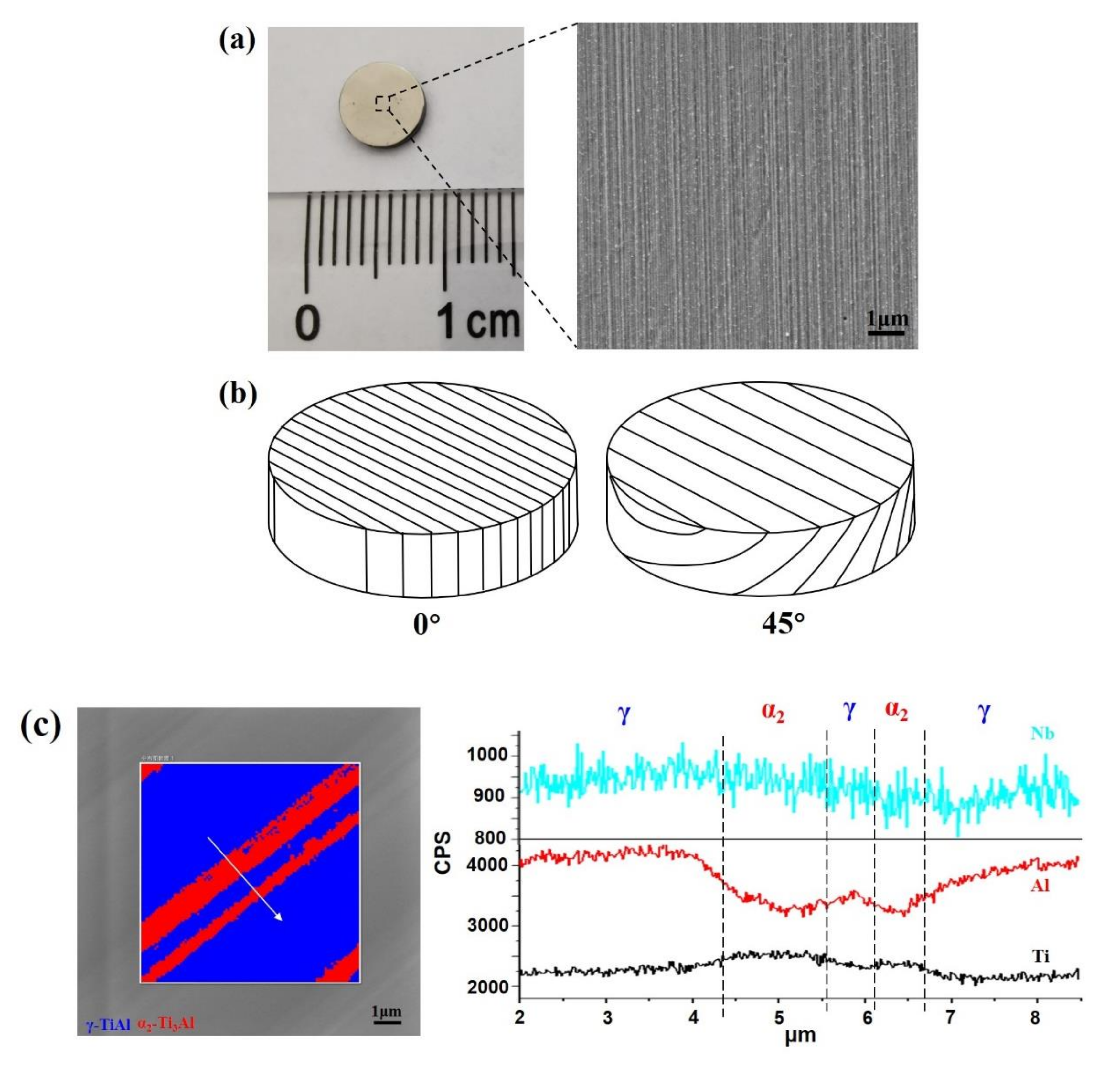
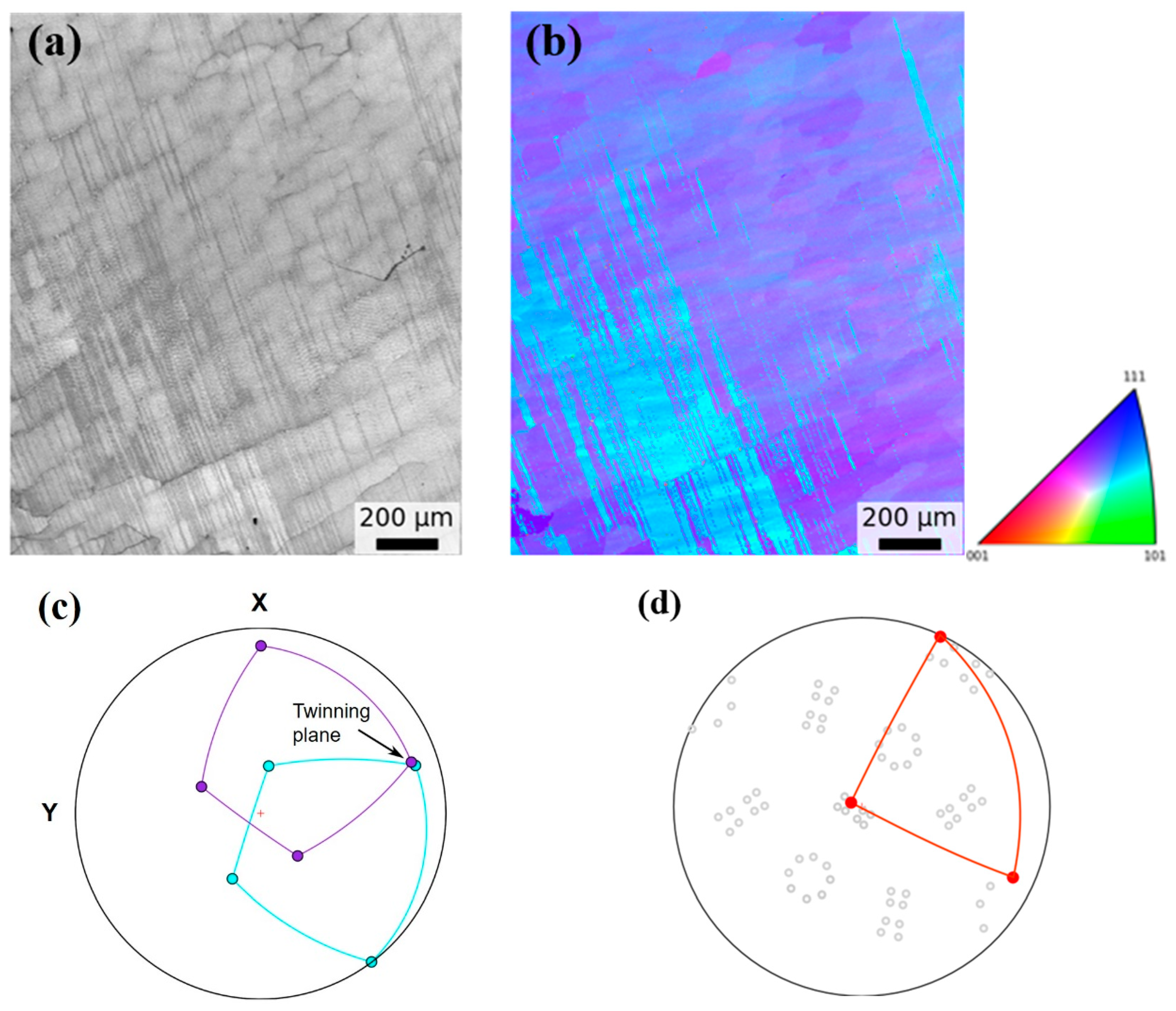
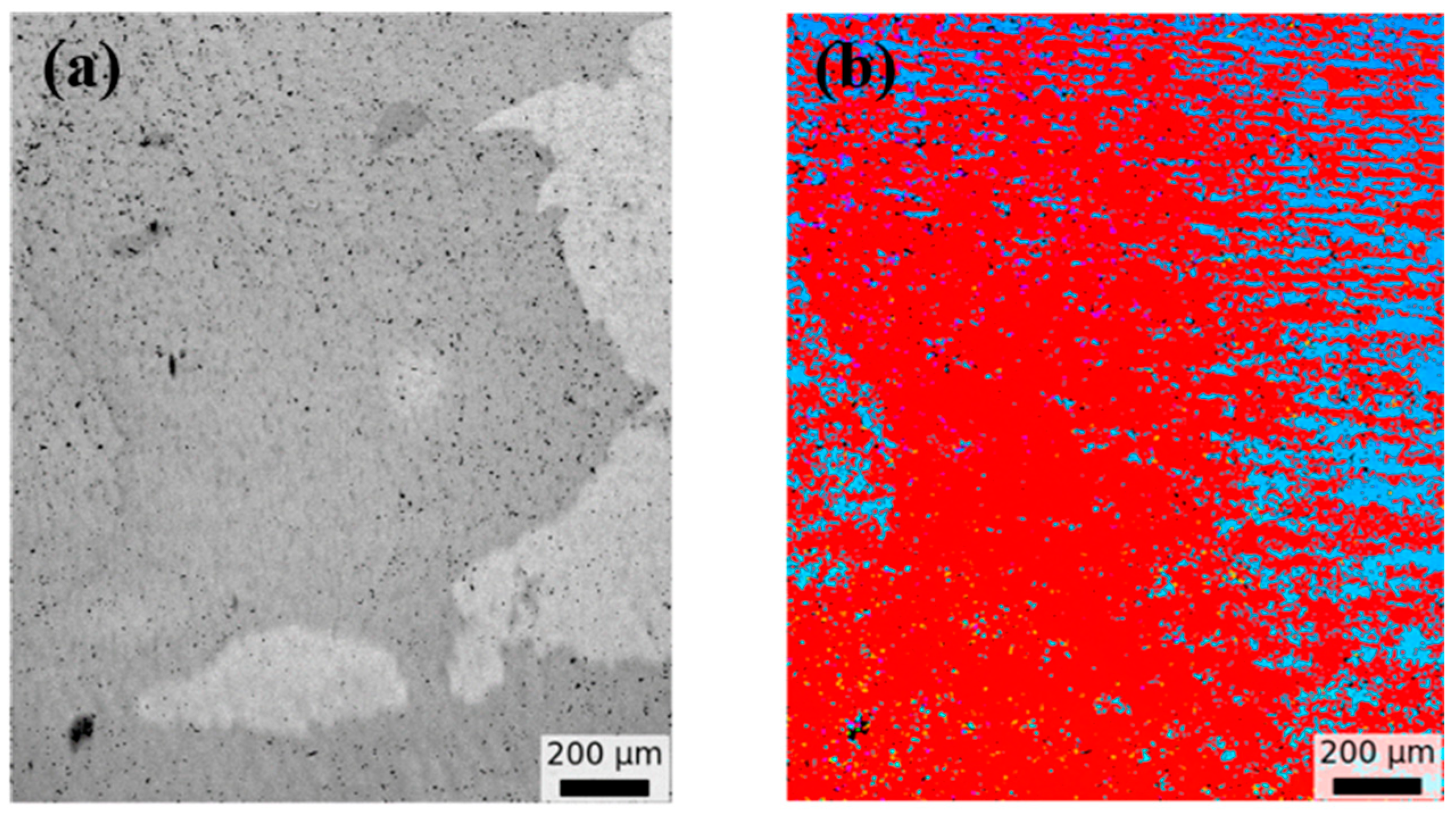

| Phase | Ti | Al | Nb |
|---|---|---|---|
| γ-TiAl | 49.15 | 41.54 | 9.31 |
| α2-Ti3Al | 59.11 | 32.55 | 8.34 |
Publisher’s Note: MDPI stays neutral with regard to jurisdictional claims in published maps and institutional affiliations. |
© 2022 by the authors. Licensee MDPI, Basel, Switzerland. This article is an open access article distributed under the terms and conditions of the Creative Commons Attribution (CC BY) license (https://creativecommons.org/licenses/by/4.0/).
Share and Cite
Zheng, G.; Peng, H.; Gu, X.; Jin, Z.; Chen, Y.; Qi, Z.; Xu, H.; Chen, F.; Cao, Y.; Feng, C.; et al. Crystallographic Origin of Phase Transformation and Lamellar Orientation Control for TiAl-Based Alloys. Crystals 2022, 12, 634. https://doi.org/10.3390/cryst12050634
Zheng G, Peng H, Gu X, Jin Z, Chen Y, Qi Z, Xu H, Chen F, Cao Y, Feng C, et al. Crystallographic Origin of Phase Transformation and Lamellar Orientation Control for TiAl-Based Alloys. Crystals. 2022; 12(5):634. https://doi.org/10.3390/cryst12050634
Chicago/Turabian StyleZheng, Gong, Haixin Peng, Xinfu Gu, Zhi Jin, Yang Chen, Zhixiang Qi, Hao Xu, Fengrui Chen, Yuede Cao, Chenming Feng, and et al. 2022. "Crystallographic Origin of Phase Transformation and Lamellar Orientation Control for TiAl-Based Alloys" Crystals 12, no. 5: 634. https://doi.org/10.3390/cryst12050634
APA StyleZheng, G., Peng, H., Gu, X., Jin, Z., Chen, Y., Qi, Z., Xu, H., Chen, F., Cao, Y., Feng, C., & Chen, G. (2022). Crystallographic Origin of Phase Transformation and Lamellar Orientation Control for TiAl-Based Alloys. Crystals, 12(5), 634. https://doi.org/10.3390/cryst12050634






